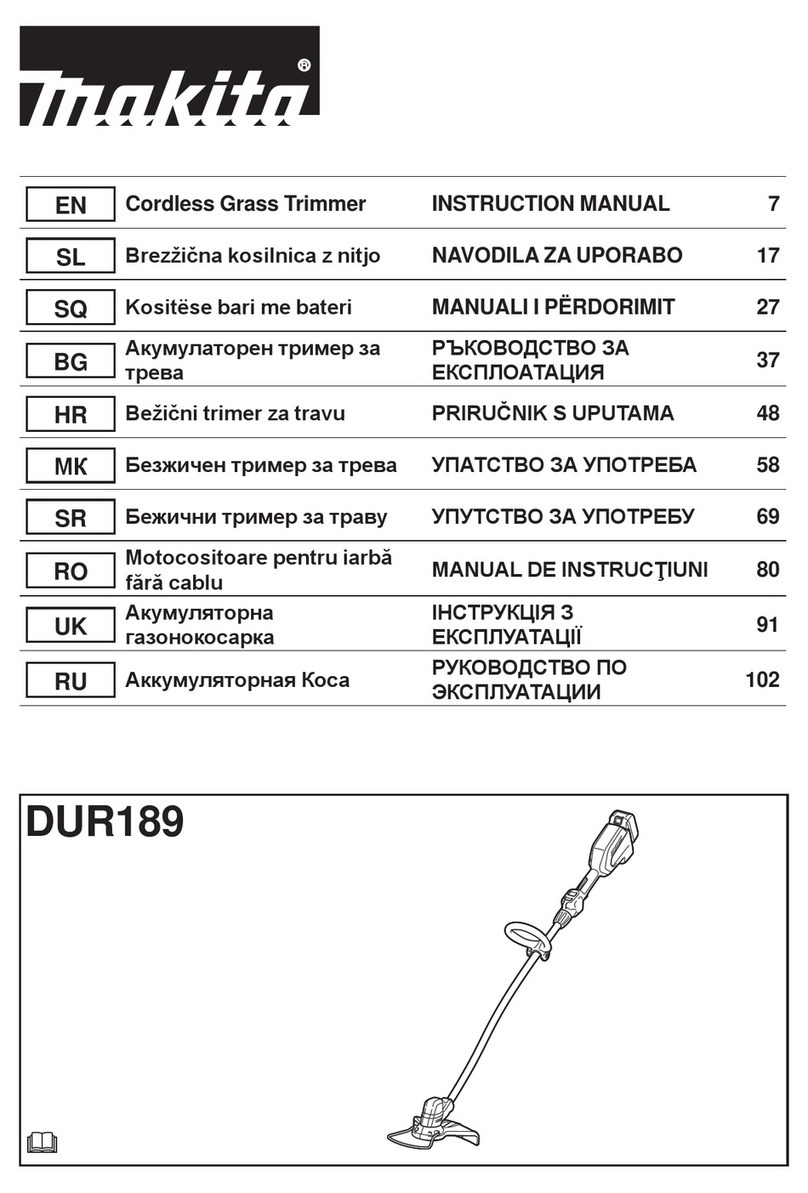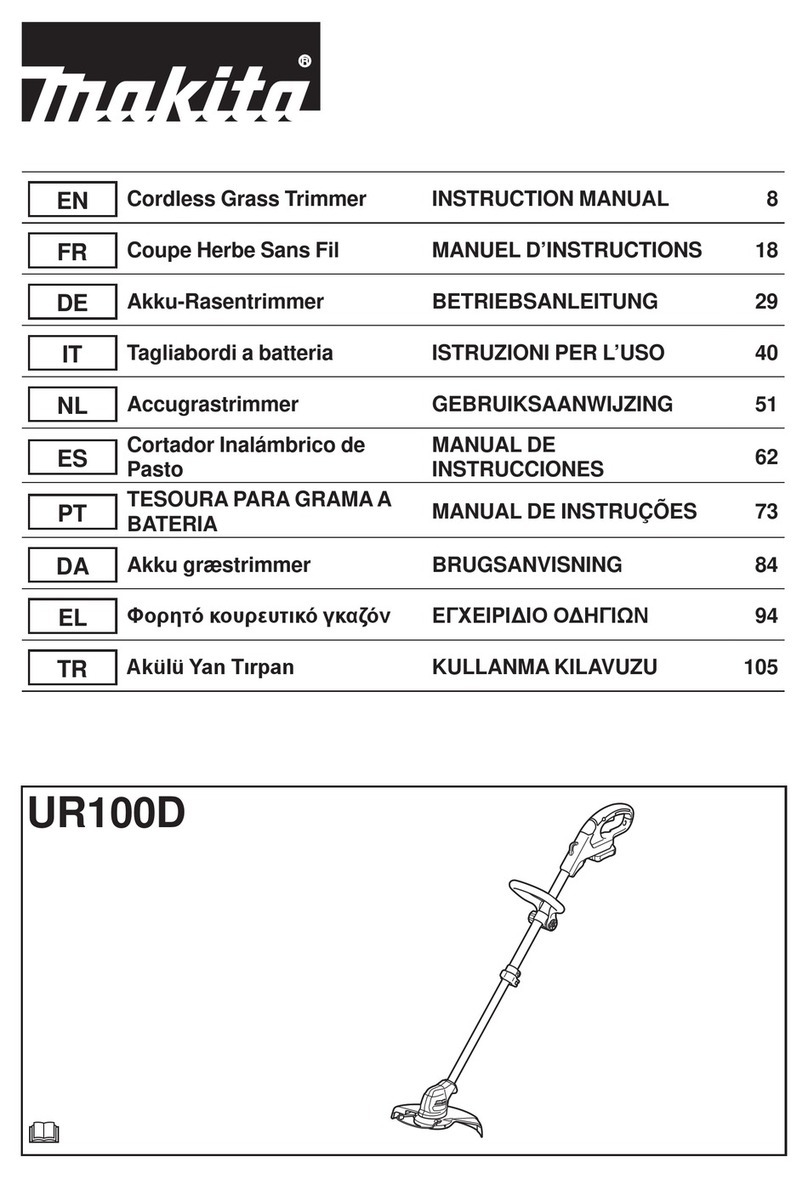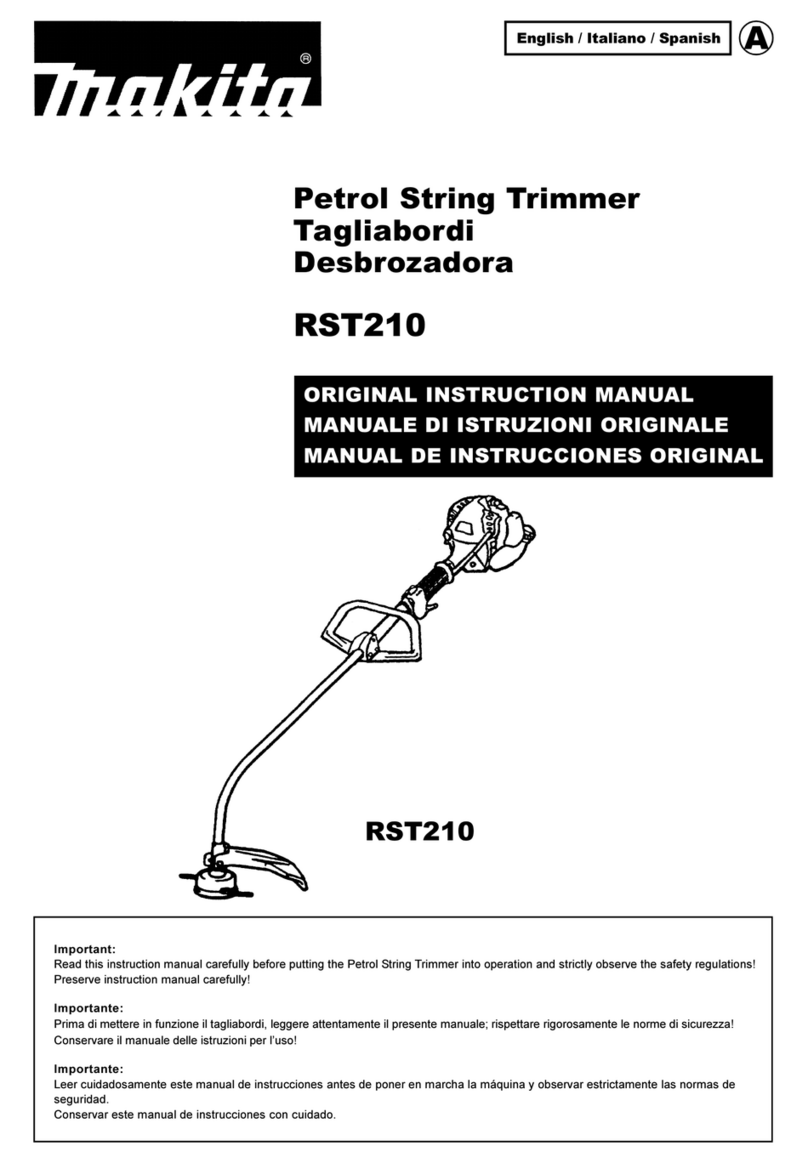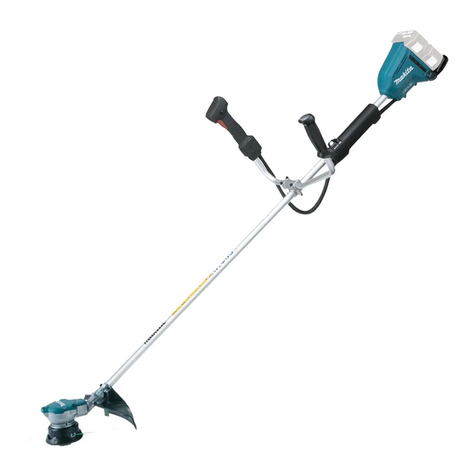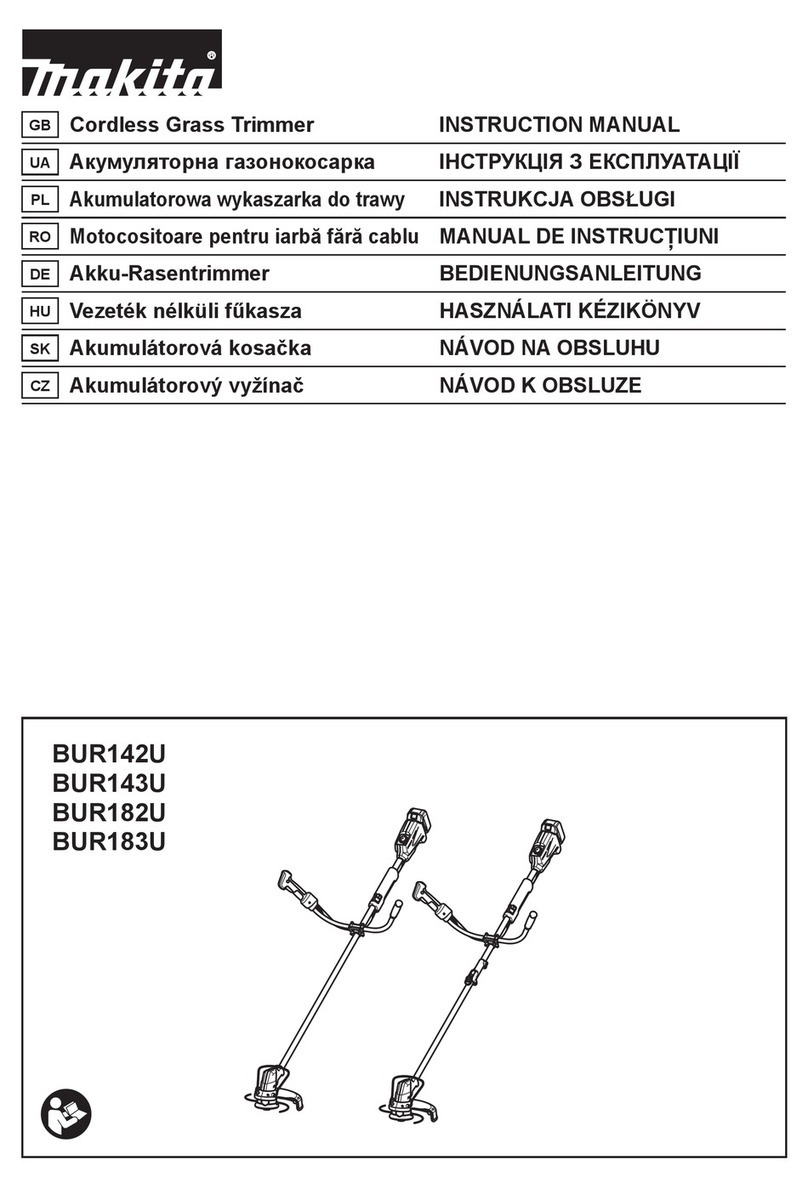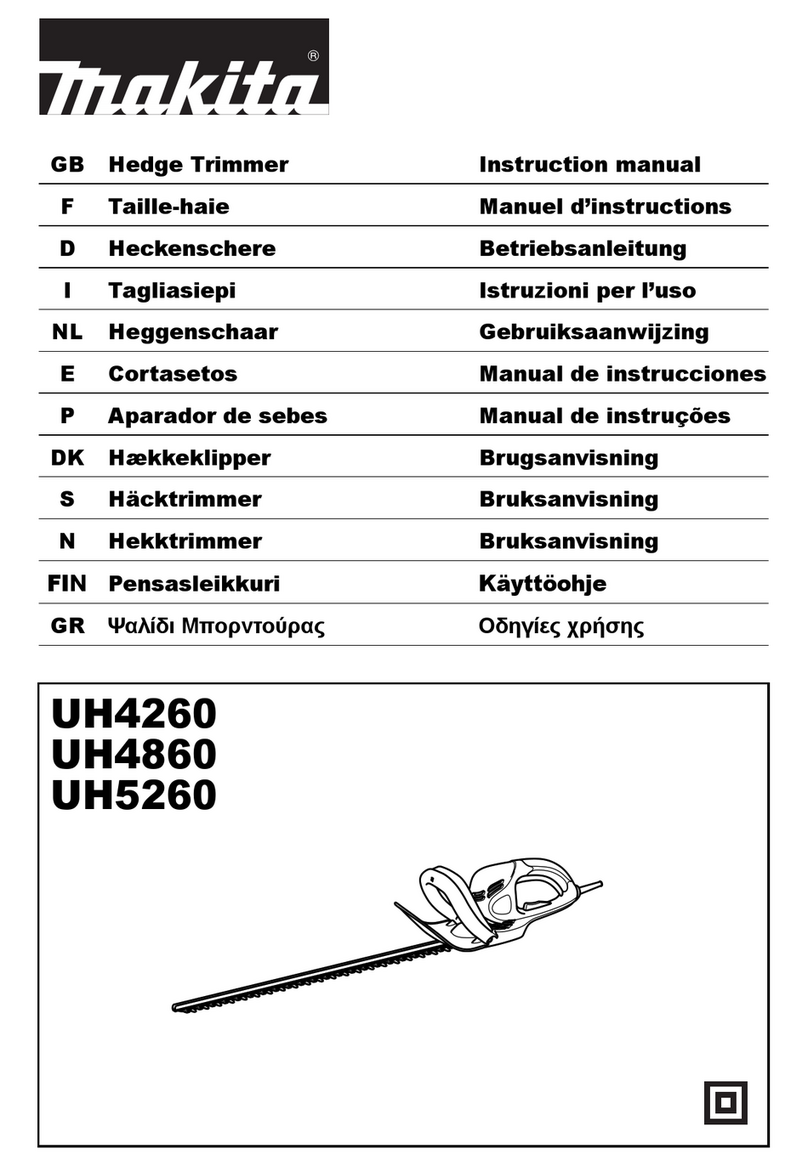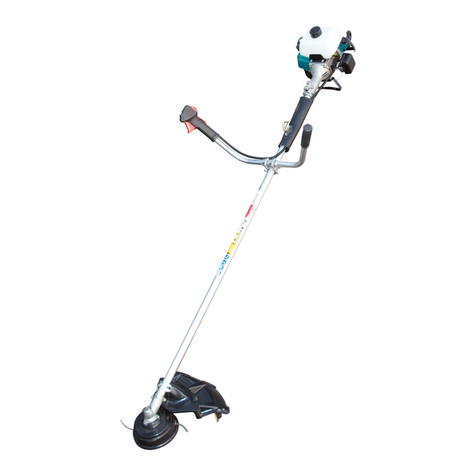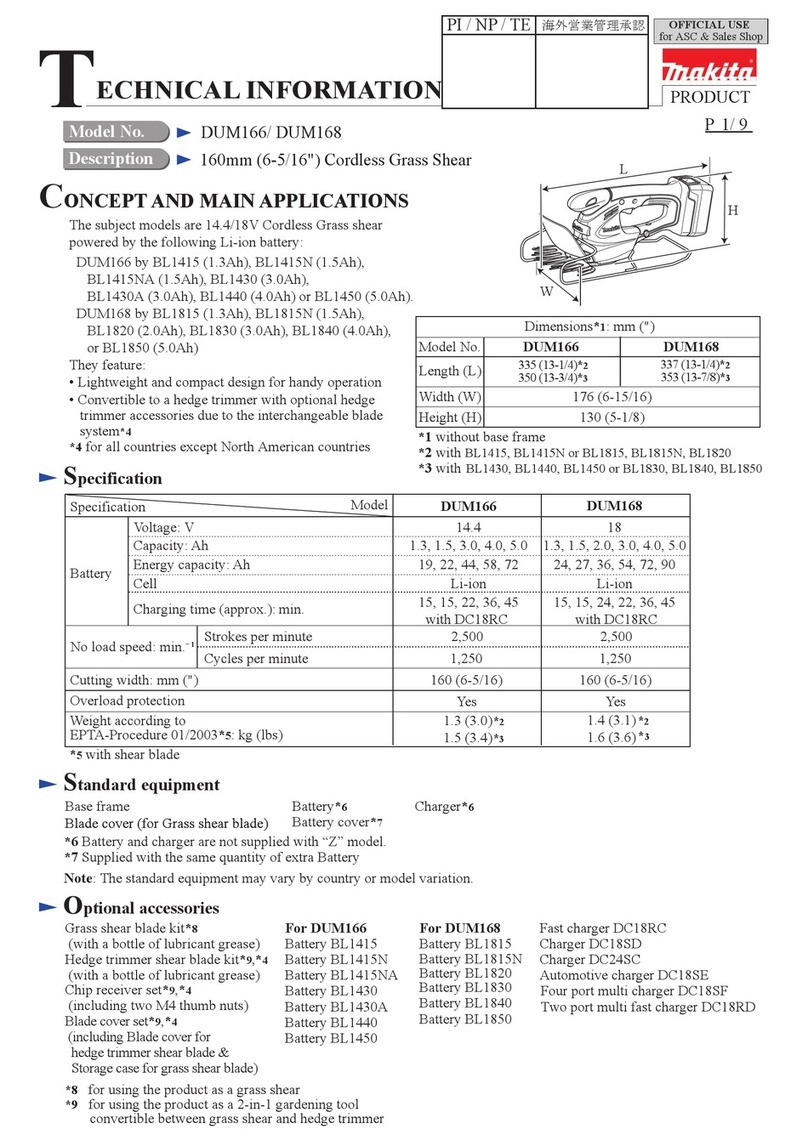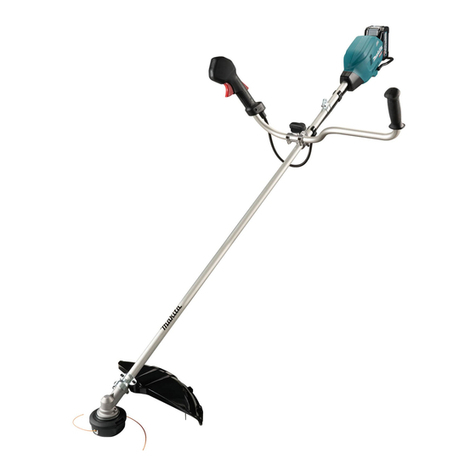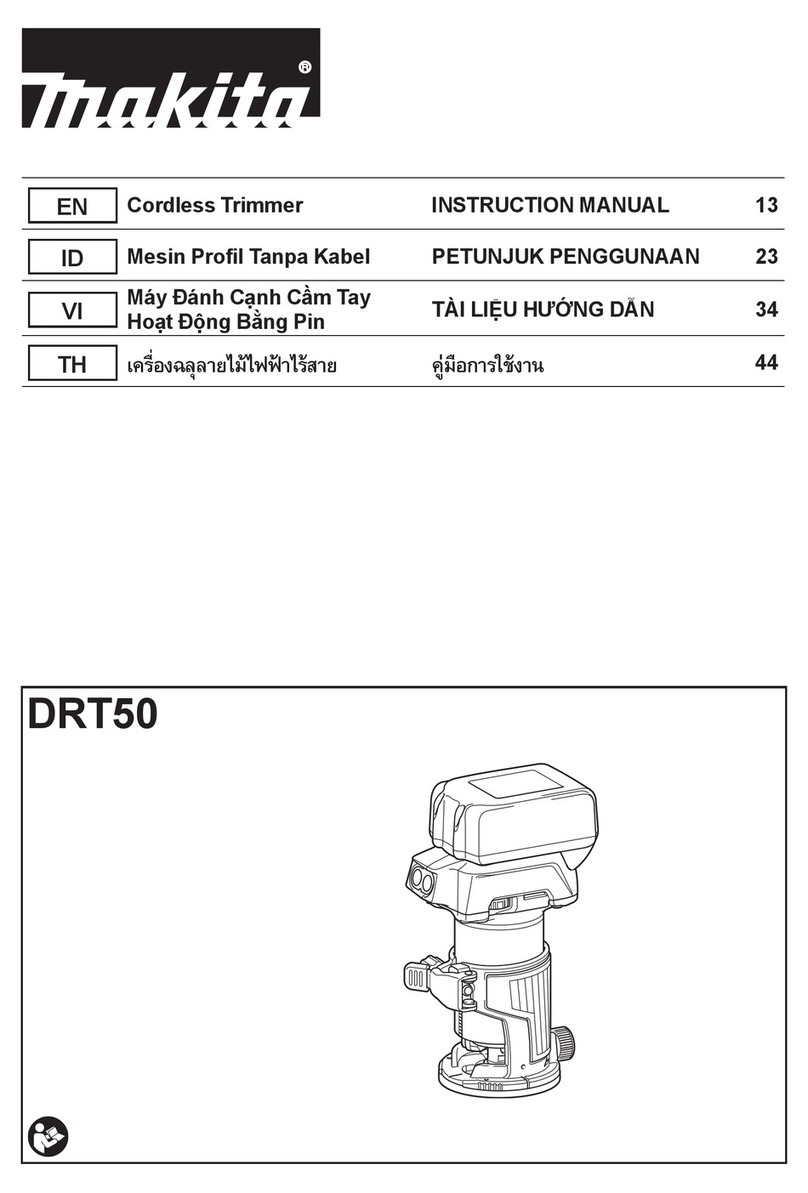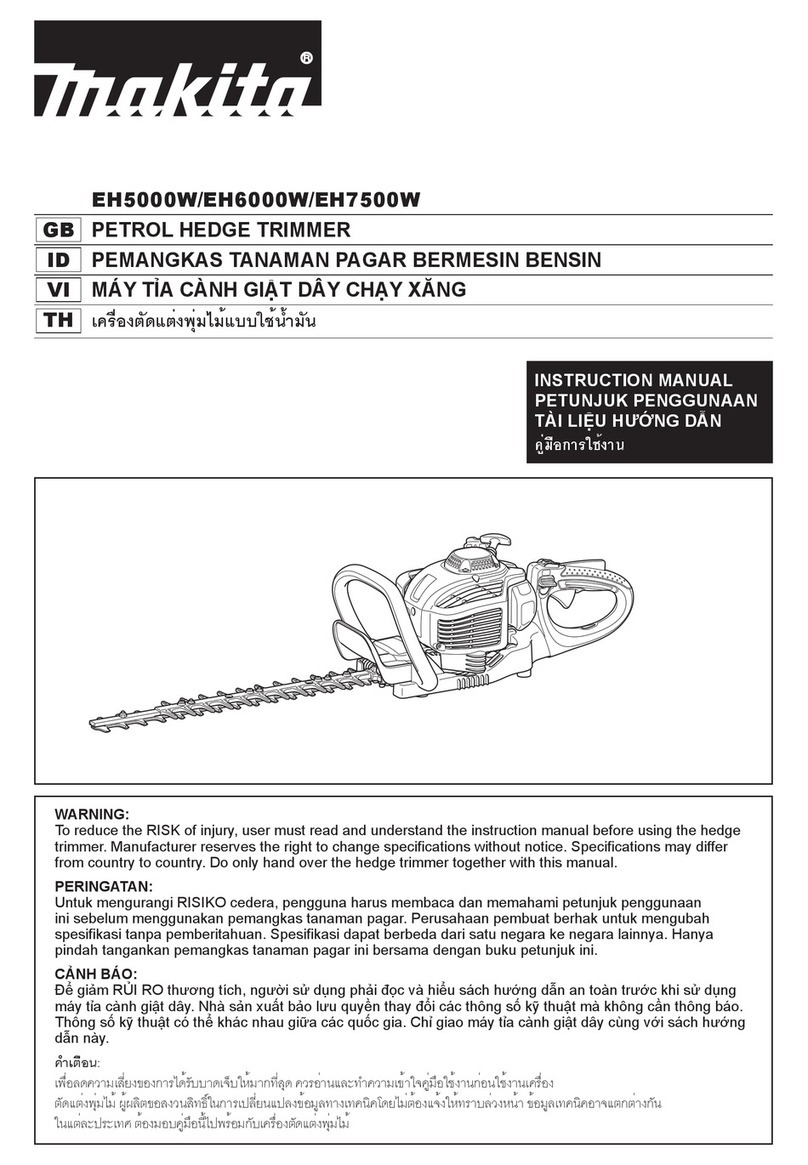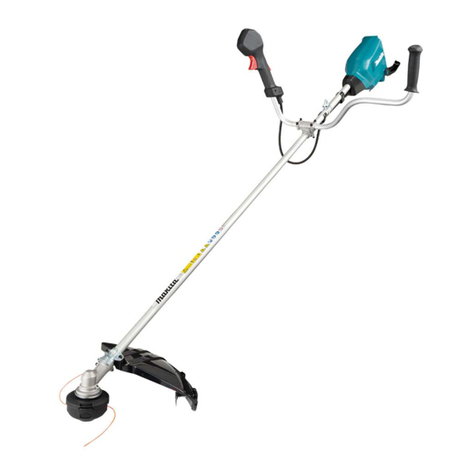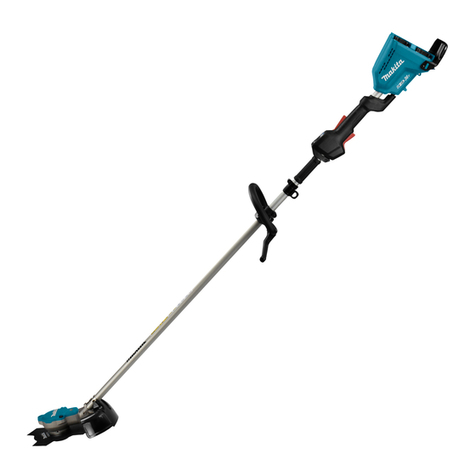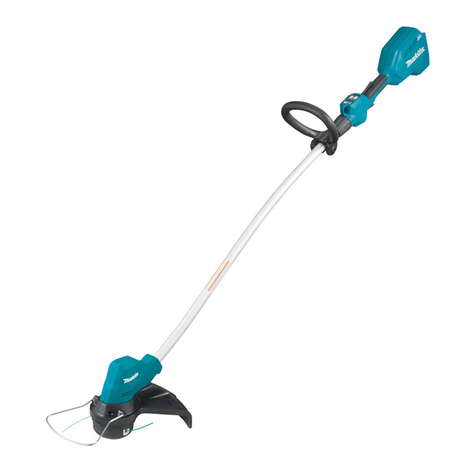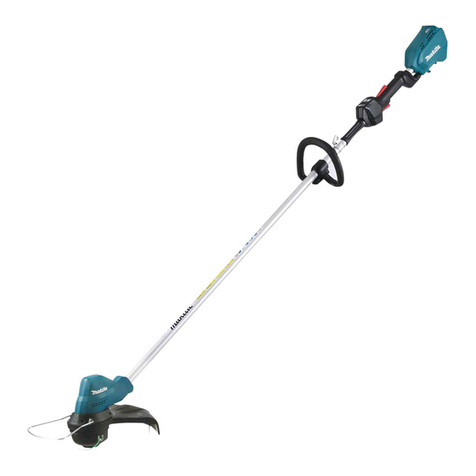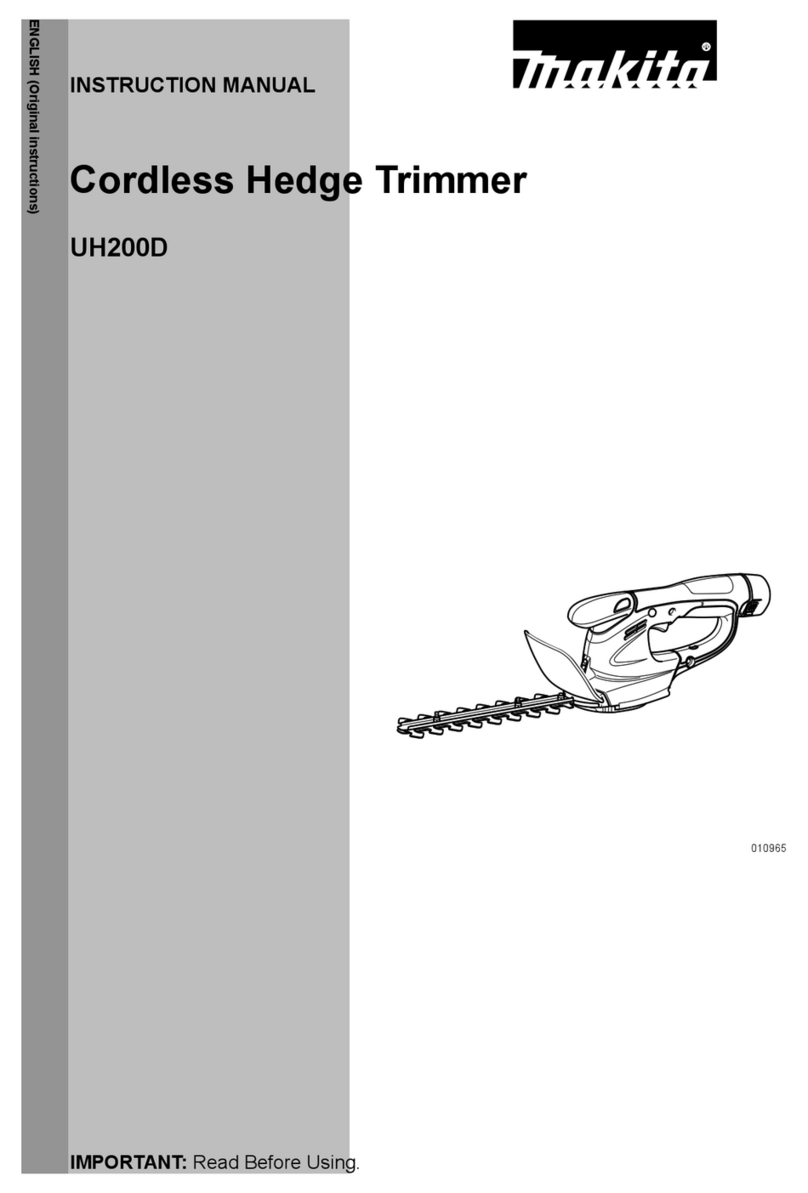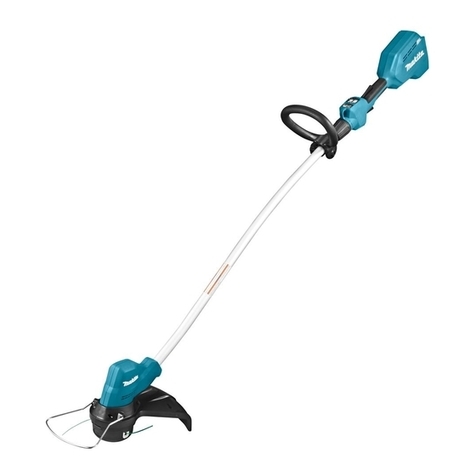
6ENGLISH
4. During operation, keep bystanders or animals
at least 15 m away from the tool. Stop the tool
as soon as someone approaches.
5. Never operate the tool while people, especially
children, or pets are nearby.
6. Before operation, examine the work area for
stones or other solid objects. They can be
thrown or cause dangerous kickback and result in
serious injury and/or property damage.
7. WARNING: Use of this product can create
dust containing chemicals which may cause
respiratory or other illnesses. Some examples
of these chemicals are compounds found in
pesticides, insecticides, fertilizers and herbi-
cides. Your risk from these exposures varies,
depending on how often you do this type
of work. To reduce your exposure to these
chemicals: work in a well ventilated area, and
work with approved safety equipment, such as
those dust masks that are specially designed
to lter out microscopic particles.
Electrical and battery safety
1. Do not expose the tool to rain or wet condi-
tions. Water entering the tool will increase the risk
of electric shock.
2. Do not use the tool if the switch does not
turn it on and o. Any tool that cannot be con-
trolled with the switch is dangerous and must be
repaired.
3. Prevent unintentional starting. Ensure the
switch is in the o-position before installing a
battery pack, picking up or carrying the tool.
Carrying the tool with your nger on the switch or
energising the tool that have the switch on invites
accidents.
4. Do not dispose of the battery(ies) in a re.
The cell may explode. Check with local codes for
possible special disposal instructions.
5. Do not open or mutilate the battery(ies).
Released electrolyte is corrosive and may cause
damage to the eyes or skin. It may be toxic if
swallowed.
6. Do not charge battery in rain, or in wet
locations.
7. Avoid dangerous environment. Don't use the
tool in dump or wet locations or expose it to
rain. Water entering the tool will increase the risk
of electric shock.
8. Do not charge the battery outdoors.
9. Do not handle charger, including charger plug,
and charger terminals with wet hands.
10. Do not replace the battery with wet hands.
11. Do not replace the battery in the rain.
12. Do not wet the terminal of battery with liquid
such as water, or submerge the battery. Do not
leave the battery in the rain, nor charge, use,
or store the battery in a damp or wet place. If
the terminal gets wet or liquid enters inside of bat-
tery, the battery may be short circuited and there is
a risk of overheat, re, or explosion.
13. After removing the battery from the tool or
charger, be sure to attach the battery cover to
the battery and store it in a dry place.
14. If the battery cartridge gets wet, drain the
water inside and then wipe it with a dry cloth.
Dry the battery cartridge completely in a dry
place before use.
15. When you use the tool on muddy ground, wet
slope, or slippery place, pay attention to your
footing.
Putting into operation
1. Before assembling or adjusting the tool,
remove the battery cartridge.
2. Before handling the cutting tool, wear protec-
tive gloves.
3. Before installing the battery cartridge, inspect
the tool for damages, loose screws/nuts or
improper assembly. If the cutting tool is bent
or damaged, replace it. Check all control levers
and switches for easy action. Clean and dry
the handles.
4. Never attempt to switch on the tool if it is dam-
aged or not fully assembled. Otherwise serious
injury may result.
5. Adjust the shoulder harness Adjust the
hand grip to suit the operator's body size if
adjustable.
6. When inserting a battery cartridge, keep the
cutting attachment clear of your body and
other object, including the ground. It may rotate
when starting and may cause injury or damage to
the tool and/or property.
7. Remove any adjusting key, wrench before
turning the tool on. An accessory left attached
to a rotating part of the tool may result in personal
injury.
8. The cutting tool has to be equipped with the
guard. Never run the tool with damaged guards
or without guards in place!
9. Make sure there are no electrical cables, water
pipes, gas pipes etc. that could cause a hazard
if damaged by use of the tool.
Operation
1. In the event of an emergency, switch o the
tool immediately.
2. If you feel any unusual condition (e.g. noise,
vibration) during operation, switch o the
tool and remove the battery cartridge. Do not
use the tool until the cause is recognized and
solved.
3. The cutting attachment continues to rotate for
a short period after turning the tool o. Don't
rush to contact the cutting attachment.
4. During operation, use the shoulder harness if
supplied with the tool. Keep the tool on your
right side rmly.
5. Do not overreach. Keep proper footing and
balance at all times. Watch for hidden obsta-
cles such as tree stumps, roots and ditches to
avoid stumbling.
6. Always be sure of your footing on slopes.
7. Walk, never run.
8. Never work on a ladder or tree to avoid loss of
control.
